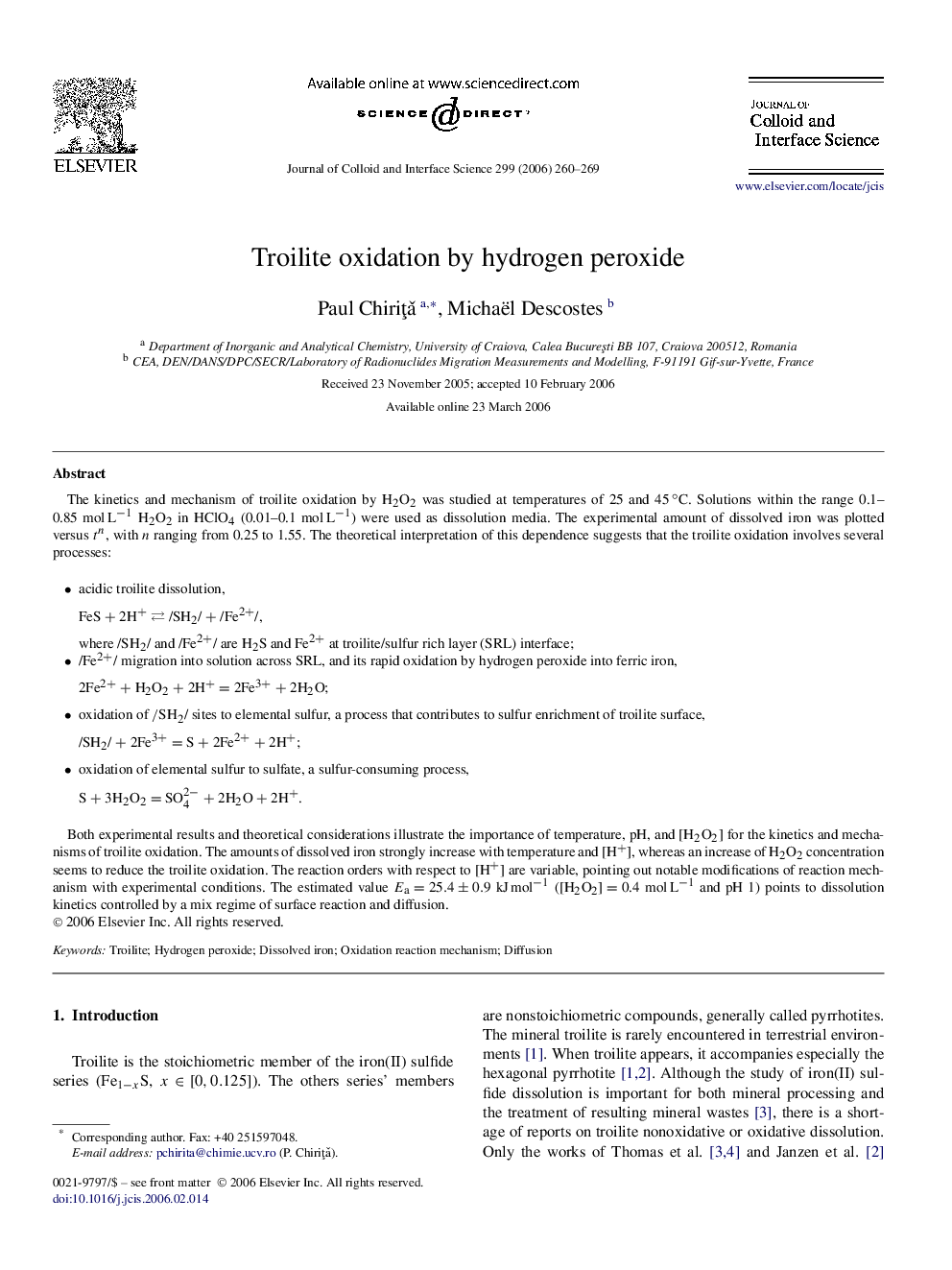| Article ID | Journal | Published Year | Pages | File Type |
|---|---|---|---|---|
| 613297 | Journal of Colloid and Interface Science | 2006 | 10 Pages |
The kinetics and mechanism of troilite oxidation by H2O2 was studied at temperatures of 25 and 45 °C. Solutions within the range 0.1–0.85 mol L−1 H2O2 in HClO4 (0.01–0.1 mol L−1) were used as dissolution media. The experimental amount of dissolved iron was plotted versus tntn, with n ranging from 0.25 to 1.55. The theoretical interpretation of this dependence suggests that the troilite oxidation involves several processes:•acidic troilite dissolution,FeS + 2H+ ⇄ /SH2/ + /Fe2+/, where /SH2/ and /Fe2+/ are H2S and Fe2+ at troilite/sulfur rich layer (SRL) interface;•/Fe2+/ migration into solution across SRL, and its rapid oxidation by hydrogen peroxide into ferric iron,2Fe2+ + H2O2 + 2H+ = 2Fe3+ + 2H2O;•oxidation of /SH2/ sites to elemental sulfur, a process that contributes to sulfur enrichment of troilite surface,/SH2/ + 2Fe3+ = S + 2Fe2+ + 2H+;•oxidation of elemental sulfur to sulfate, a sulfur-consuming process,S + 3H2O2 = SO2−4 + 2H2O + 2H+.Both experimental results and theoretical considerations illustrate the importance of temperature, pH, and [H2O2] for the kinetics and mechanisms of troilite oxidation. The amounts of dissolved iron strongly increase with temperature and [H+], whereas an increase of H2O2 concentration seems to reduce the troilite oxidation. The reaction orders with respect to [H+] are variable, pointing out notable modifications of reaction mechanism with experimental conditions. The estimated value Ea=25.4±0.9 kJmol−1 ([H2O2] = 0.4 mol L−1 and pH 1) points to dissolution kinetics controlled by a mix regime of surface reaction and diffusion.
Graphical abstractThe changes with experimental conditions in reaction orders with respect to [H+] point out that troilite oxidation by hydrogen peroxide proceeds through different reaction mechanisms.Figure optionsDownload full-size imageDownload as PowerPoint slide
